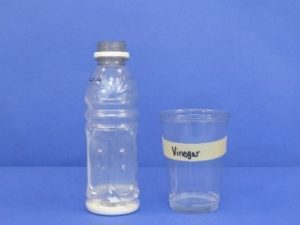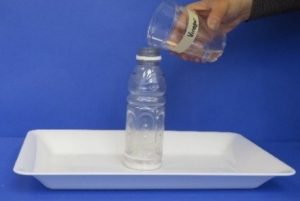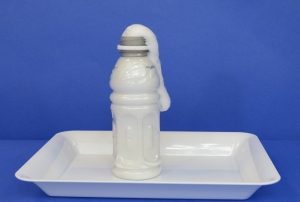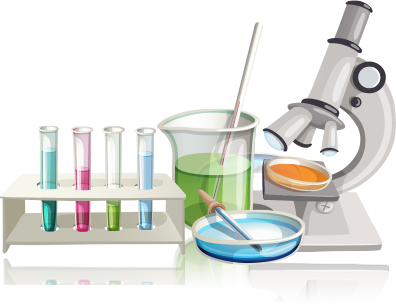You may have used vinegar and baking soda before to make bubbles. In this experiment, we add a little dish detergent to make the bubbles last longer and see if you can use chemistry to control the amount of bubbles you make!
Here's what to do:
- Use your masking tape and pen to label the cup vinegar. Pour 2 tablespoons of vinegar into the vinegar cup.
- Add 1 drop of dish detergent. Swirl gently to mix.
- Carefully add 2 teaspoons of baking soda to the empty bottle.

- With the help of your adult partner, carefully pour all of the liquid from the vinegar cup into the bottle with the baking soda. Swirl the mixture.


- What do you observe?
- When no more bubbles form, you can rinse out the bottle in the sink and get ready to try something new.
What to expect
When the vinegar is added to the baking soda, lots of bubbles form and move up the bottle and overflow.
What's happening in there?
A chemical reaction between the vinegar and the baking soda produces bubbles of carbon dioxide gas. The dish detergent in the vinegar helps the bubbles last longer than they would with just vinegar and baking soda.
What else could you try?
You could try figuring out how much vinegar and baking soda you need to make the bubbles come to the top of the bottle but not overflow. First try using half as much vinegar and baking soda as in the previous activity.
Be safe
Be sure to review the safety instructions on page 1 before proceeding.
Here's what to do:
- Try adding 1 tablespoon of vinegar with one drop of dish detergent to the vinegar cup.
- Add 1 teaspoon of baking soda to the bottle.
- With the help of your adult partner, carefully pour all of the vinegar into the bottle with the baking soda. Swirl the bottle. Even if you think the reaction has stopped, keep swirling because there may be more bubbling still to come!
What to expect
The bubbles will rise in the bottle but will probably not overflow. They might come to the top of the bottle or a bit lower.
- Try changing the amounts of vinegar and/or baking soda until you get the bubbles to rise to the top of the bottle but not overflow. Good luck!
Think about this …
If you kept the amount of vinegar the same but added more and more baking soda, would you always get more bubbles or would the increase in bubbling finally stop? Why or why not?
